The plant syngonium (Syngonium) is part of the Aroid family. This genus unites about 30 species, but only 2 or 3 species are cultivated at home. The plant is found in tropical Central and South America. The syngonium is a relative of the philodendron plant.
Such a plant is a herbaceous vine, which has aerial roots and slender shoots. The sheet plates are arrow-shaped. At first they are solid, but with age, their shape becomes dissected. At home, this flower is cultivated as an ampelous plant or as a liana. This plant is popular with flower growers due to its arrow-shaped foliage. During planting or transplanting into a pot, a special support is installed, since without it the flower will not be able to grow normally. A support is placed in the center of the container, then the drainage layer and a small amount of the substrate are poured. They put a bush and straighten the roots, and then fill the pot with soil mixture and compact it a little.
Content
Brief description of cultivation
- Bloom... At home, syngonium is cultivated as an ornamental deciduous plant.
- Illumination... A bright but diffused light is required.
- Temperature regime... During the growing season - from 18 to 24 degrees, in winter - from 16 to 18 degrees.
- Watering... During the growing season, the substrate is moistened immediately after its top layer dries out, and in winter - two days after that.
- Air humidity... Should be elevated. In the hot season, the syngonium is moistened with a spray bottle in the morning and evening every day. Once every 7 days, the surface of the foliage should be wiped with a damp soft cloth. To increase the humidity of the air, wet expanded clay is poured into the pallet and a pot with a flower is placed on it.
- Fertilizer... They are fed from spring to autumn 1–2 times every 30 days, for this they use a complex mineral fertilizer for flowering plants.
- Dormant period... From about October to February.
- Pruning... Above the 6–7 leaf plate, pinching of the top of the stems is carried out.
- Transfer... Young bushes are transplanted every year, and adults - once every 2 or 3 years.
- Soil mixture... Sand, leaf and turf soil, and peat (1: 2: 2: 2).
- Reproduction... Cuttings.
- Pests... Aphids and scale insects.
- Diseases... Decay of shoots and loss of decorativeness due to improper care and violation of conditions of detention.
- Properties. The juice of this plant is poisonous.
Syngonium care at home
Illumination
It is recommended to grow the syngonium at home on a windowsill of either western or eastern orientation. It can also be grown on the north window. On the southern window, such a flower will be excessively hot, and due to too bright lighting, the foliage will become faded, which negatively affects the decorative effect of the plant. Protect flowers from direct sunlight.
Temperature regime
During the growing season, the air temperature should be 18-24 degrees. And in winter, the flower should be kept cool (from 16 to 18 degrees).
Watering
Water the plant with well-settled (at least 24 hours) soft water. In the warm season, watering is carried out immediately, as soon as the top layer of the substrate dries out. In winter, watering is reduced and the soil mixture is moistened only when two days have passed after the top layer of the soil mixture has dried. Do not allow liquid to stagnate in the substrate.
Air humidity
In the hot season, it is recommended to moisturize the foliage regularly twice a day in the evening and morning. And to remove dust from the foliage, it is regularly wiped with a damp sponge. In order to increase the level of air humidity, pour moistened expanded clay or peat into the pallet, and place a container with a plant on it, while the water should not touch its bottom. Under no circumstances place a flower near heating appliances.
Fertilizer
In winter, this plant is not fed. At other times of the year, the syngonium is fed 1 or 2 times in 30 days with mineral fertilizers.
Bloom
As a rule, when grown indoors, this plant does not bloom. But if it does bloom, then the flower will be represented by a not very large ear, which is wrapped in a white blanket.
Pruning
To make the bush thicker and more effective, it is necessary to pinch the apical shoots. As a rule, they are pinched after the sixth or seventh leaf plate.
Syngonium transplant
While the plant is young, it is transplanted annually, and older specimens are subjected to this procedure 1 time in 2 or 3 years. At the bottom of the container, make a drainage layer; on top it is covered with soil mixture, which can be neutral or slightly acidic. The approximate composition of the substrate: leaf and sod soil, sand and peat (2: 2: 1: 2). This plant can be grown hydroponically at home.
Syngonium propagation by cuttings
Syngonium can be propagated by cuttings. When harvesting cuttings, shoots are cut, on which there should be at least one bud. For rooting cuttings, you can use water (add an activated carbon tablet), vermiculite, sand, sphagnum, or a mixture of moss and sand or peat and sand. The cuttings should root in a warm place (25 to 27 degrees). After rooting, they are planted in separate pots. In order for the bush to be more lush and effective, several cuttings are planted in one container at once.


Watch this video on YouTube
Virulence
The juice of this plant is poisonous... Therefore, do not allow the juice to come into contact with your hands, mouth or eyes. If this does happen, then rinse off the juice with plenty of running water.
Possible problems
- Flying around foliage... In the event that in the room where the syngonium is located, the air humidity is very low, then the tips and tops of the leaf plates turn brown. After some time, the foliage begins to fly around.
- Drops on foliage surface... If there is an excessively high air humidity in the room, then water droplets may form on the tips of the sheet plates. This will not harm the plant in any way, so there is no need to reduce the level of humidity.
- Yellowing of foliage. If the bush lacks nutrients, then its foliage turns yellow.
- Syngonium rots... If the plant is cool and with high humidity, then this may cause rot on the shoots.
- Pests... If the air humidity is too low, aphids or scale insects may appear on the plant.
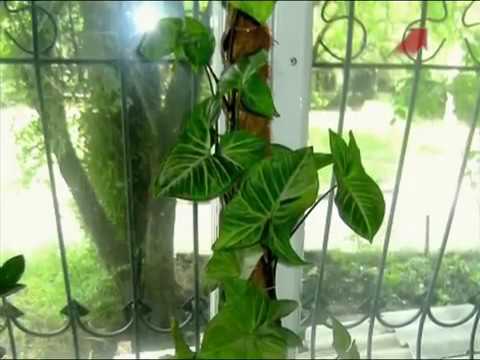

Watch this video on YouTube
Types of syngonium with photos and names
Syngonium wendlandii
This species is a liana. Small velvety leaf plates of dark green color have central veins, which are sometimes cast silvery.
Syngonium podophyllum
This liana is decorated with dark green leaf plates. Young foliage looks like an arrowhead, and an adult one looks like slings. In length, the middle part of the leaf plate reaches up to 30 centimeters, and in width - up to 10 centimeters.
Syngonium auritum (Syngonium auritum)
Or the syngonium is eared. This plant is a vine. The long branches are about 20 mm thick. Glossy green leaf plates change their shape as they grow. Young foliage looks like an arrowhead. And adult leaf plates are dissected into 3-5 parts with small segments that outwardly resemble ears at the base.
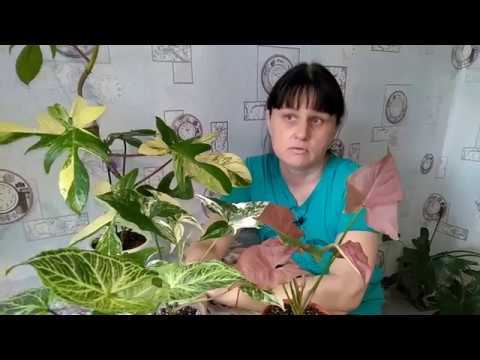

Watch this video on YouTube

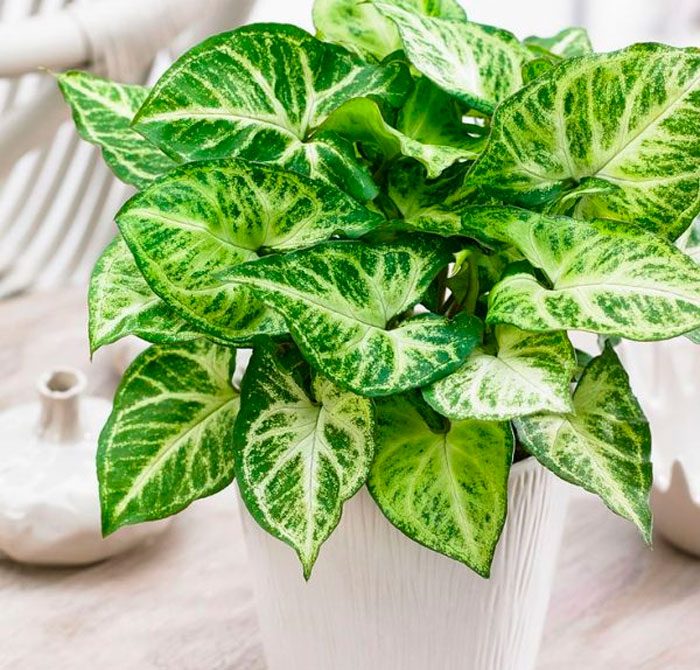
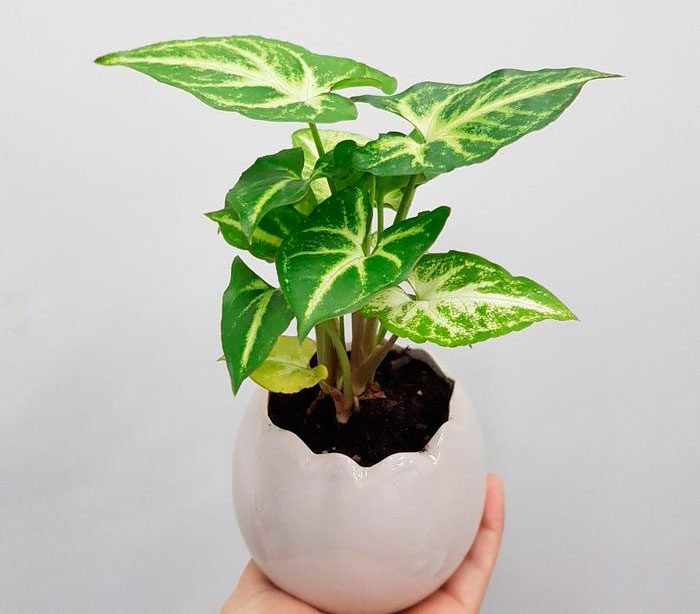
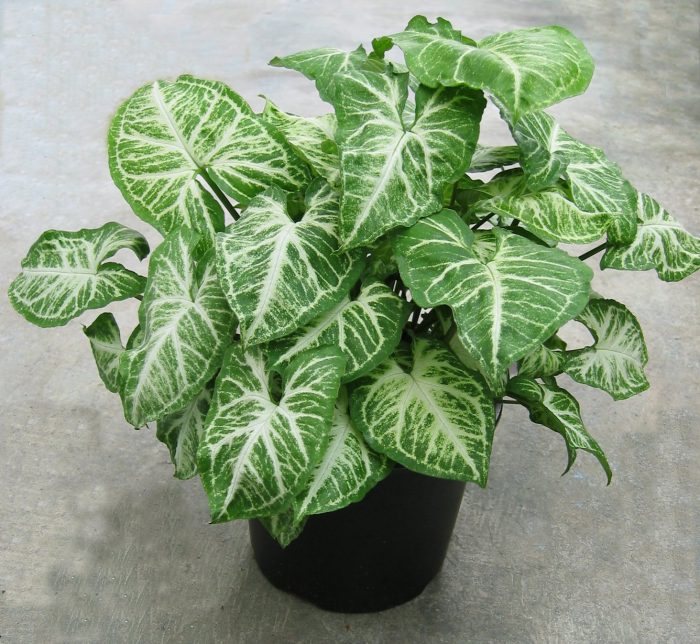
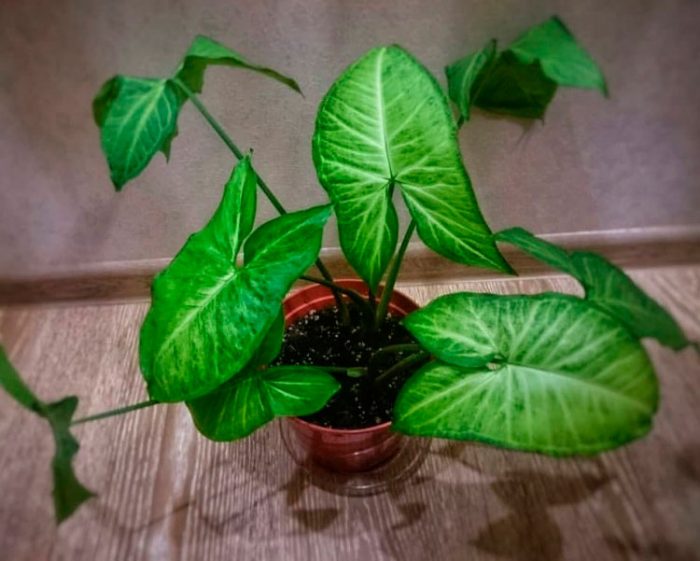
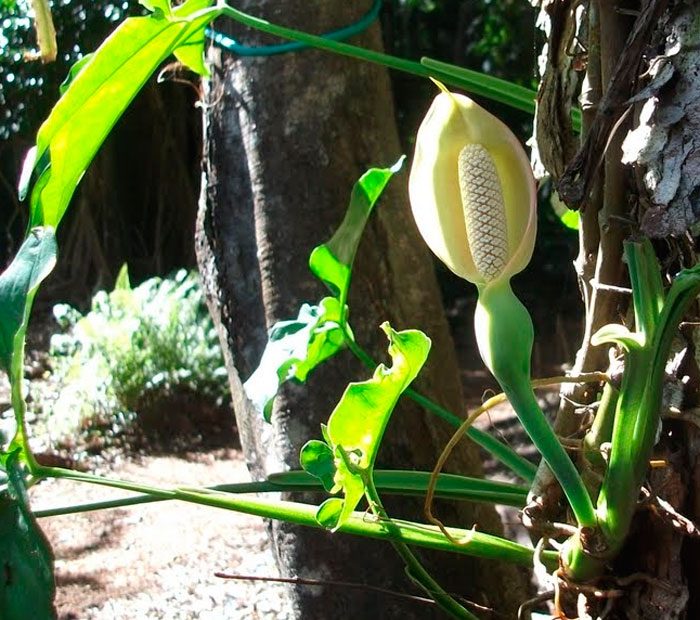
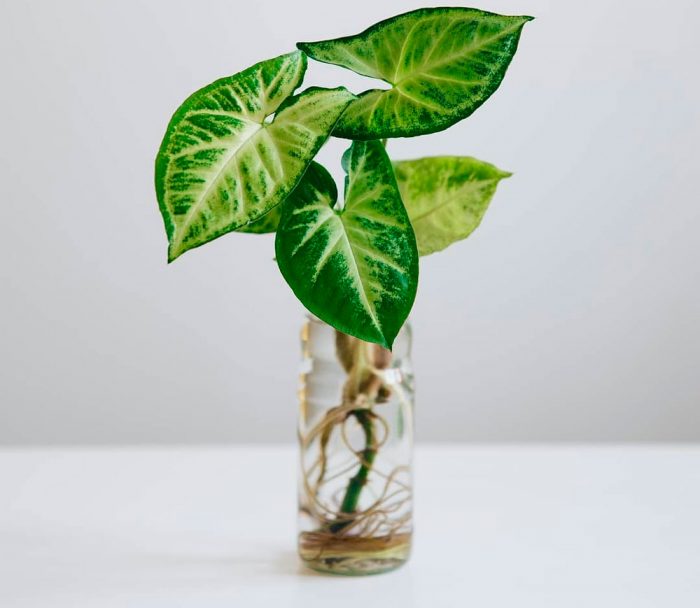
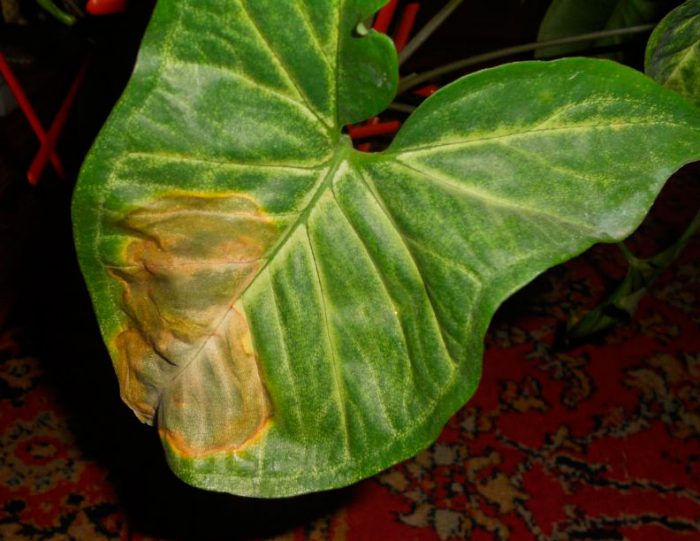
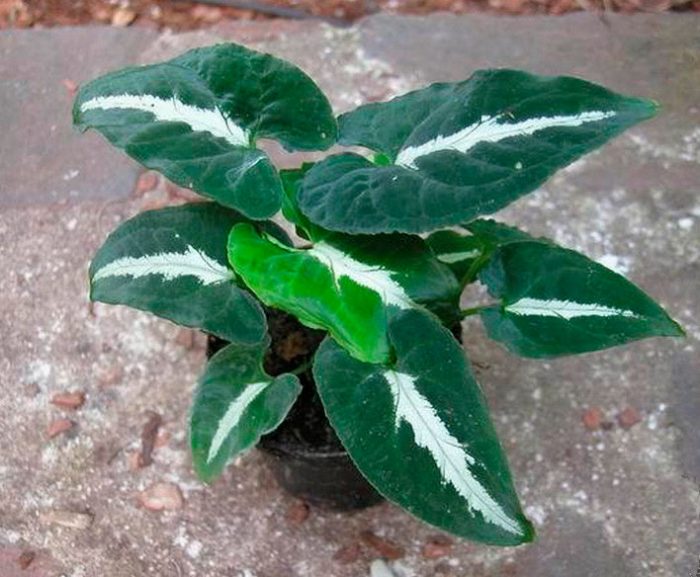
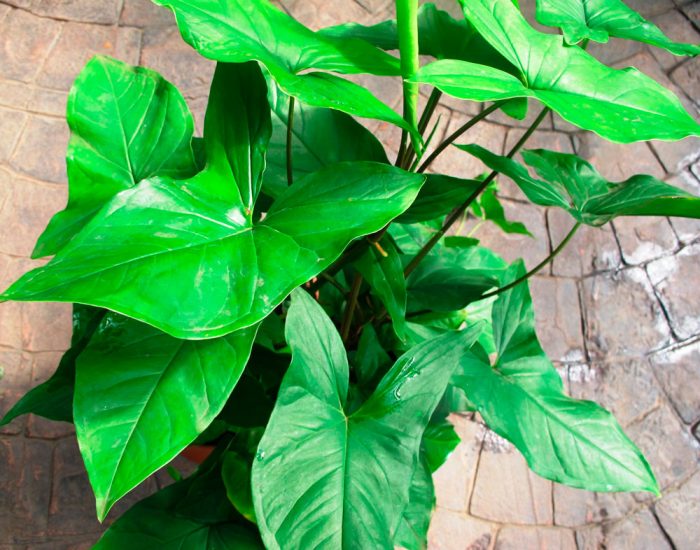
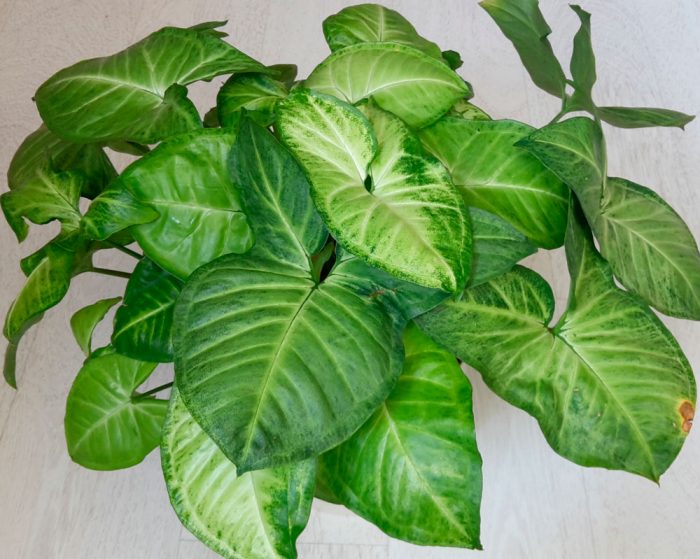


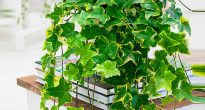

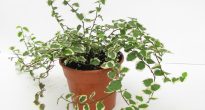
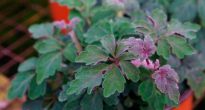
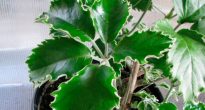

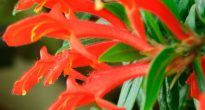

Judging by the photo, I have ear-shaped syngonium. I don't see any hints of a liana, there is nothing to pinch, it grows for six months only in breadth, bushy. I don’t fool with any wet expanded clay in the pallet and spraying - it calmly transfers dry air. Not a single leaf turned brown from lack of moisture in the air. Absolutely unpretentious and hardy plant, without problems in cultivation and care.
I completely agree with IRINA. A completely unpretentious plant. It stands in the back of a room with windows to the north. To avoid liana, you need to cut off excess leaves.
My ear-shaped syngonium lianium in the first two years, grew large leaves, then began to multiply in breadth, but the leaves became smaller. In the summer, it began to dry out without watering for 10 days, if I am on vacation. dried up, it seemed hopelessly - 100%. But every time he recovered. Which made me very happy, and I considered him unpretentious. He lived with me for over 10 years. But last year she transplanted the second time in his life, and this year the leaves began to rot (